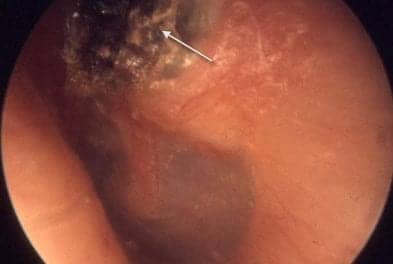In the “first nationwide National Institutes of Health-funded study of its kind,” led by the Center for Deaf Health Equity at Gallaudet University, scientists and researchers found that adverse childhood communication experiences are associated with increased risks for multiple chronic diseases in deaf and hard-of-hearing adults, according to an announcement from Gallaudet University.
The Gallaudet study, in collaboration with researchers at Boston Children’s Hospital and the University of Texas at Austin on early life communication experiences, is “the first to gather and utilize patient-reported outcome data from a large US deaf and hard-of- hearing adult sample exploring the association of childhood communications experiences with adulthood health outcomes.” The study was recently published in the American Journal of Preventive Medicine.
The Center for Deaf Health Equity at Gallaudet University is a deaf-led research center that conducts rigorous research that lays the foundation for better health-related quality of life among deaf and hard-of-hearing people who use American Sign Language (ASL).
The study’s authors are Poorna Kushalnagar, PhD, Gallaudet University Professor and Center for Deaf Health Equity Director; Sanjay Gulati, MD, Child and Adolescent Psychiatrist, Boston Children’s Hospital; Raylene Paludneviciene, PhD, Professor, Gallaudet University; Claire Ryan, MA, PhD student, Educational Psychology Program, University of Texas at Austin; and Arielle Spellun, MD, Developmental and Behavioral Pediatrics Fellow, Boston Children’s Hospital.
“Even with the best intentions among parents and other family members, communication neglect and language deprivation do happen and can have serious health consequences,” said Kushalnagar. “This is especially true for deaf children, the vast majority of whom are born to hearing parents. Our research very clearly shows the significant health risks associated with language deprivation and communications neglect, and we hope will help accelerate critically needed prevention and remediation.”
Among the study’s key findings:
- Direct Child-caregiver Communication/Language Deprivation. Poor direct communications between a child and primary caregiver is significantly associated with an increased risk for several chronic conditions. Specifically, if one-on-one communication between a child and their caregiver is nearly nonexistent, this increases the child’s risks for heart conditions by 61%, diabetes by 12%, and hypertension by 10%.
- Indirect Family Communication/Inclusion/Communications Neglect. Poor indirect family communications and ongoing exclusion from incidental family communication and conversation are associated with increased risks for specific medical conditions. Specifically, if a child reports always feeling left out or not included in family communication, this increases the child’s risks for depression/anxiety disorders by 34% and lung disease by 19%.
Toxic Stress of Early Childhood Language Deprivation and Communication Neglect
The study notes that two forms of early life toxic stress that can potentially impact the health of individuals who are deaf and hard of hearing are language deprivation (insufficient access to direct child–caregiver communication during the critical period of language development) and communication neglect (ongoing or recurrent exclusion from indirect family communication and incidental learning).
According to the study, even when caregivers are successful in isolated one-on-one conversations with their children, they may lack the communication abilities to fully include the child in all family and group interactions. This can be referred to as communication isolation, exclusion, or neglect, and forms another potential source of early life toxic stress for children who are deaf and hard of hearing. A deaf child may attempt to remind family members to include him/her in conversations but may be told to wait or simply be ignored. Many people who are deaf and hard of hearing recall family members saying, “It wasn’t important” or “I’ll tell you later,” where “later” is often forgotten. These concerns for children who are deaf and hard of hearing remain regardless of parents’ intention, awareness, or conscious efforts to ensure that their child who is deaf or hard of hearing has full communication access in their immediate environment.
Need for Prevention and Remediation
Kushalnagar and colleagues note that a better understanding of these adverse communications experiences as contributors to chronic disease is needed so that interventions and policy can better support accessible, language-rich, and inclusive environments for all children, including deaf and hard-of-hearing children and their families. The medical and education community, they said, needs to consider developing and utilizing screening measures to spot possible language deprivation and communication neglect and work to remediate.
Methodology
The study’s researchers surveyed 1,524 deaf and hard-of-hearing adults who were born deaf, or who became deaf in both ears prior to age 13. The one-hour online survey, conducted from May 2016 to May 2019, collected data about early-life communications experiences with caregivers and family members.
Research reported in this press release was supported by the National Institute on Deafness and Other Communication Disorders (NIDCD) of the National Institutes of Health (NIH) under award number R01DC014463. The content is solely the responsibility of the authors and does not necessarily represent the official views of the NIH.
For more information please visit the Center for Deaf Health Equity at Gallaudet University and Gallaudet University.
Original Paper: Kushalnagar P, Ryan C, Paludneviciene R, Spellun A, Gulati S. Adverse childhood communication experiences associated with an increased risk of chronic diseases in adults who are deaf. American Journal of Preventative Medicine. 2020. DOI: https://doi.org/10.1016/j.amepre.2020.04.016.
Source: Gallaudet University, American Journal of Preventative Medicine





